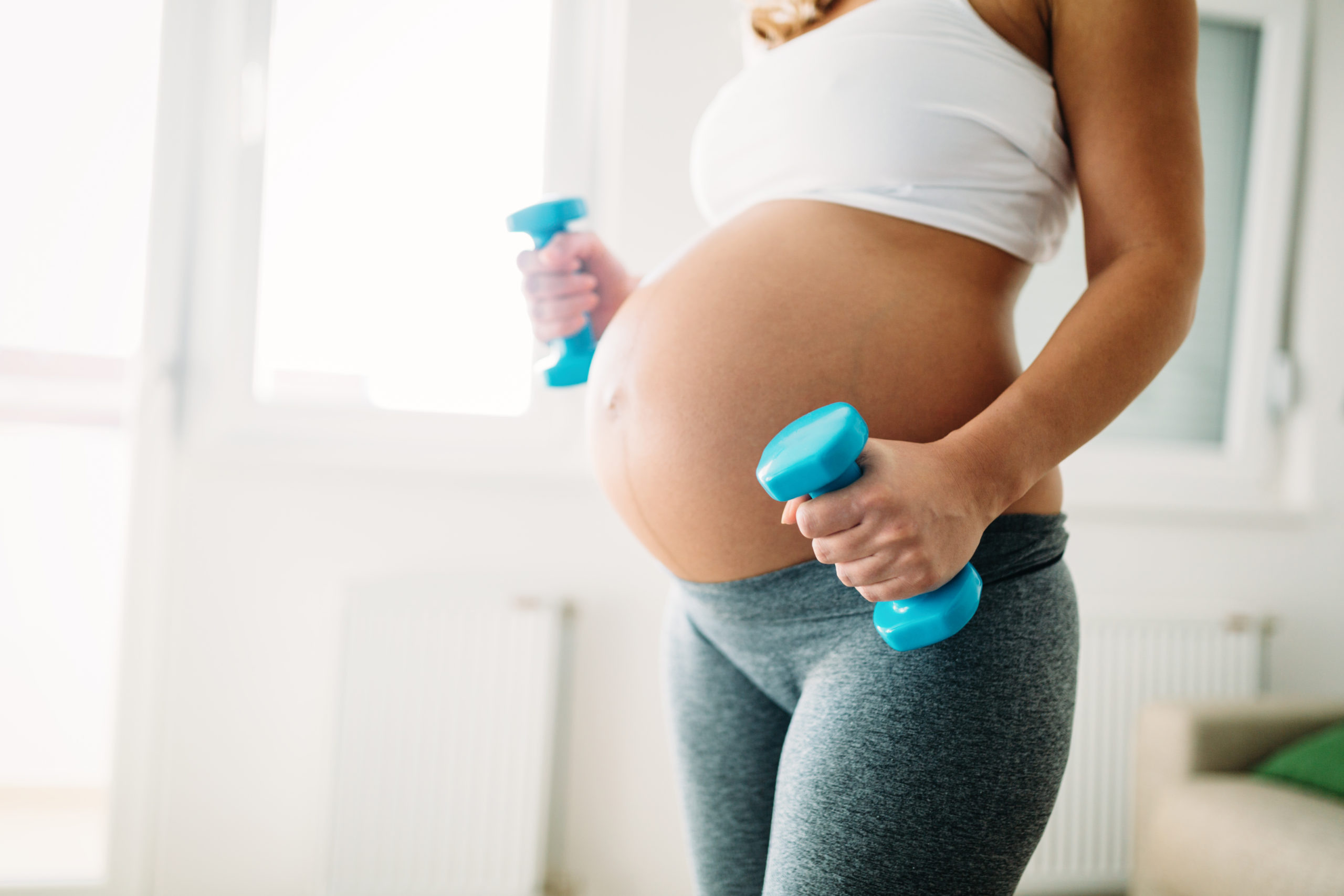by Megan Van Rentergem
When you become pregnant, you quickly realize that your body will continue to be, experiencing many changes. It’s exciting and scary all at the same time. For women who have established an avid fitness routine, you may be wondering what is safe to continue to do. For women who aren’t necessarily dedicated to a routine, it may be a struggle to find the motivation to move, or you may be wondering what an acceptable movement that won’t be too hard on your body is.
No matter what your pre-pregnancy fitness level was, a general rule of thumb is just to keep moving. Any movement, whatever feels natural to you on any given day, will act as a great form of exercise to keep you and your baby healthy. For women who were frequently exercising pre-pregnancy, as long as you have approval from your doctor, it is generally beneficial for you to continue to move and exercise as you did before you became pregnant. For example, if you are a runner and are experiencing a normal, low-risk pregnancy, it is most likely perfectly healthy for you to continue to run. Don’t be afraid to modify your speed and mileage, and be sure to listen to your body. And if running isn’t your speed (pun intended), light activities, including a quick walk or stretching session, are great ways to keep moving. Pregnancy is not the time to take on any new vigorous workouts, but consistent, light exercise has been proven to have many benefits for both mom and baby.
First Trimester
During the first trimester, many women experience exhaustion and nausea. These two ailments combined can make exercise—even for those established in a good routine—seem very daunting. It is important to give yourself grace while also taking advantage of the moments you feel better and have more energy. Taking a quick walk or getting up to stretch can help alleviate some of your symptoms and improve your mental health as well. If you were exercising before, make sure to listen to your body. Hydration is essential. This is not the time to push your limits. Listen to your body and modify your exercise routine as necessary.
Second Trimester
When the second trimester comes along, moms-to-be are said to gain back a little bit of the energy they had pre-pregnancy. You can stick with the same activity that you have been doing before pregnancy and/or during the first trimester, but now is a good time to take advantage of how much better you’re feeling and try to come up with a realistic exercise regimen that you feel you can stick to. Although you have more energy and may exercise more frequently, the same precautions of staying hydrated and listening to your body apply.
Third Trimester
The third trimester may bring new struggles as your belly continues to grow and you adjust to your new body. At this point, listening to your body will be more important than ever. If a stretch or exercise does not feel right, don’t do it. Substituting some of your old exercises for stretches and movement that may help prepare your body for labor could be very helpful. Although it may be harder to move, try to stay mobile the best you can to help yourself during labor and recovery after the baby is born. Although you may feel like your movement may not be as effective as it once was, any movement will still provide many benefits to you and your baby.
If you are newly pregnant and worried about your exercise and fitness routine, it is advisable to first speak with your doctor. Once you are cleared for different activity types, follow your doctor’s guidelines while continuing to hydrate yourself and pay attention to what feels good to your body. Pregnancy brings many changes to the body, but simple movement and exercise may provide many benefits to keep you in your best physical and mental health.








Leave A Comment